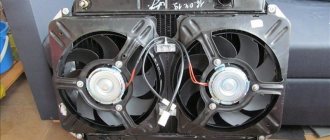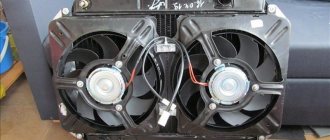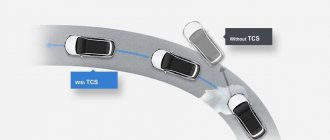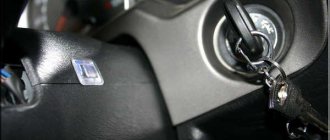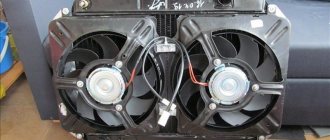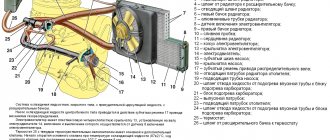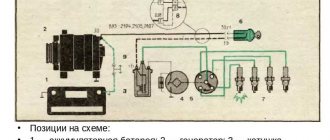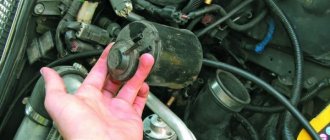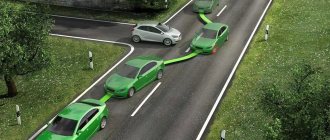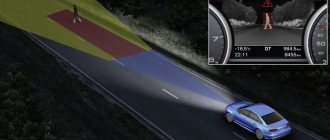Passenger comfort and safety are extremely important factors for automakers when producing modern vehicles. Moreover, if 5-10 years ago electronic assistants when driving a car were inherent only in the most expensive models, recently even budget models are equipped with a number of assistants. One of the most important for the driver is the Hill-Start Assistant Control system. In order for the car owner to understand how this option works and when it can help, you need to clearly understand the essence of such a service, as well as the principle of its operation.
What is the essence of the HAC assistant?
The HAC driver assistance service owes its appearance to the Japanese car]Toyota[/anchor]. Auto company specialists have developed this assistant, which helps prevent the car from rolling back in the opposite direction when starting to drive uphill. The presence of such an assistant allows the driver not to use the handbrake. The use of such an assistant is extremely important when starting to drive on steep slopes, where many motorists are unable to hold the car and allow it to roll downhill or stall.
The appearance of the HAC assistant was made possible thanks to the existence of a dynamic stabilization system. At its core, this service is not a separate technical element, but involves the installation of additional software to the existing stabilization system. Its use prevents the car from rolling down when starting on a hill. By using the assistance system, a braking force is generated for the car, due to which the car is kept stationary for several seconds.
Compatible with DAC
The system supports drivers on steep hills and downhill slopes. In addition to HAC (Hill-Start Assist Control), another technology can be used in the car - DAC (DownHill Assist Control). The HAC supports drivers on steep hills, while the DAC does the same when going downhill. The driver may experience sudden instances when the vehicle slips when descending steep inclines or when driving on slippery surfaces (say, in winter). HAC minimizes vehicle rollback by controlling brake fluid pressure when the driver's foot leaves the brake pedal and moves to the throttle. In addition, DAC maintains vehicle speed at 5 km/h to ensure vehicle stability when going down steep slopes or slippery surfaces.
No HAC system
Without Hill start assist, the following occurs:
- When going up a steep hill, the vehicle rolls back and has difficulty getting up without a push as it slips;
- The HAC system helps increase control over the machine and prevents the wheels from turning in different directions.
No DAC system
If you do not install this system in your car, the following will happen:
- The wheels lock when you press the pedal when descending a steep slope;
- The system improves handling when descending steep and slippery surfaces.
How does HAC work?
The essence of the work of this assistant can be described as follows: after the driver removes his foot from the brake pedal, the pressure in the brake system decreases extremely slowly, which ensures that the car is kept static for several seconds. Such a service will work subject to the following conditions:
- the angle of inclination at which the assistant can operate is 5 degrees or more;
- The ignition is turned on in the car and the engine is running;
- the brake pedal is depressed.
The very principle of the assistant’s work involves four main cycles:
- creation - during this period, maximum braking force is observed as a result of pressing the brake pedal;
- holding - the brake pressure is maintained at a high level until the car moves off;
- decrease - the force of the braking system becomes weaker;
- reset – there is no brake pressure in the system.
Principle of operation
The acceleration sensor uses DC current to detect when the vehicle is at a height. This does not happen in cases where the equipment is located in an area with a flat road.
When the lean is detected by the acceleration sensor, the driver begins to press the brake pedal, but this pressure is maintained for about 2 seconds after the car owner withdraws his foot. When the accelerator driver is running, the brake pressure is released.
In what situations can the assistant help the driver?
Thanks to the presence of an assistant when starting to move on an incline, the driver can avoid problems in the following difficult situations:
- the car engine stalls during maximum load and insufficient use of the gas pedal;
- poor-quality coating, ice, wet asphalt, which results in the car’s wheels slipping;
- rolling away the car;
- different traction of the driving wheels with the road in a situation where one of the wheels hits a snowy part of the road.
For what reasons may the system not work?
As a rule, the hill start assist, which is built into the main control unit for the ABS or ESP assistants, does not work in the following situations:
- The systems control unit itself does not work;
- there is a problem with the wheel rotation sensors;
- there was a break in the electrical wiring or sensors;
- excessive wear of brake pads;
- there is not enough fluid in the brake system;
- There is liquid between the brake discs and pads, which prevents effective braking.
Design and principle of operation using the example of Lada Vesta
The operating principle of Hill Start Assist on a Lada Vesta is not very different from the general approach used on other cars.
The device works on the principle of reducing pressure in the brake system after releasing the accelerator pedal.
To activate an HSA, three components are required:
- The car starts;
- The brake pedal is pressed;
- The tilt angle is greater than 5% (unless another parameter has been previously specified).
The device itself operates on the basis of four cycles (phases), each of which performs a specific task:
- Sufficient brake pressure is created for operation;
- Maintains brake pressure;
- Reduces pressure in the brake system;
- The pressure has been released.
At the moment the brake is pressed (at the moment of lifting), the brake system performs its functions provided that the valves (switching and suction) are open. As a result, Hill Start Assist creates braking pressure that holds the vehicle in place.
When the brake is released, the switch valves close and the brake circuits are maintained at the required pressure, preventing the vehicle from rolling away as your foot moves from one pedal to the other.
As soon as the throttle valve is opened (the accelerator pedal is depressed), the bypass valves open. This factor helps reduce brake pressure.
When engine torque reaches the required speed, the switch valves open 100% to relieve pressure.
It should be noted that the hill start assist system only works uphill. An interesting fact is that the direction of movement does not matter. Consequently, the device will also work when driving uphill in reverse.
On what vehicles can the system be used?
As you know, the system itself is designed to protect cars from rolling when starting to move on an incline whose slope exceeds 5 degrees. Initially, the developers planned to use it only on models equipped with an automatic transmission. However, after the excellent results demonstrated by the service when working in tandem with an automatic transmission, manufacturers decided to try to use a similar system on vehicles equipped with a manual transmission. Despite the fact that the developers revised the principle of operation of the assistant and tried to adapt it to “mechanics”, reviews of its work in this case are not as good as for cars with automatic transmission. The main problem is that the service does not understand when the driver starts moving and when he performs a normal change of gas. As a result, instead of help, the car owner may end up with additional problematic situations. Therefore, if a car equipped with a manual transmission is equipped with such a service, the driver will need to undergo a series of training to adapt to its operation.
What is Hill Start Assist?
Device.
Hill Start Assist is a set of components whose action is aimed at preventing the car from rolling away on an inclined road.
The main task.
Simplify the driver’s work when stopping on an incline (for example, before a traffic light at an intersection) and eliminate the use of the handbrake. HSA is installed on passenger cars of Russian and foreign brands.
The purpose of Hill Start Assist is to create additional braking force that will keep the car on a steep slope. In this case, the holding force occurs after the brake pedal is released.
Thanks to the action of HSA, when you move your foot from the brake pedal to the gas pedal, the car does not roll away, but is securely fixed in one place.
Such a system is a reliable assistant if you need to frequently move around the city, in off-road conditions or on mountain roads.
Novice car enthusiasts get confused by abbreviations. The reason for this phenomenon is easy to explain - each manufacturer has an individual name for HSA:
- At Volkswagen, the system discussed in the article is called Hill Hold Control (abbreviated as HHC).
- Manufacturers Fiat or Subaru have Hill Holder.
- Toyota has Hill-Start Assist Control (HAC or HSA).
- The manufacturer Nissan has Uphill Start Support (abbreviation USS).
The assistance device, which ensures that the car is fixed on a hill, is based on dynamic stabilization.
We are talking about a software extension installed on many cars. This means that Hill Start Assist is not considered an independent system.
HSA is activated automatically when the machine is parked on a slope of 5 degrees or more.
The specified angle can be adjusted in one direction or the other to achieve the greatest comfort in motion.
When the driver plans to move away, he releases the brake and then puts his foot on the gas.
When the brake pedal is released, the braking system continues to operate until the throttle valve is opened. This action prevents the car from rolling away, which increases traffic safety and comfort for the motorist.
The main disadvantages of an assistant
Like most electronic systems, this assistant, along with a lot of positive qualities, also has many disadvantages. These include:
- “misunderstanding” of the situation, especially if the car is equipped with a manual transmission;
- In case of failure, the system may require contacting a specialized service and expensive repairs.
In general, it must be said that the presence of an assistant that helps prevent the car from rolling away when starting to move on an incline is a very important and useful point in its configuration. The presence of this service is especially important for novice motorists who have little driving experience and are not always able to show the proper reaction to emergency situations on the road.


